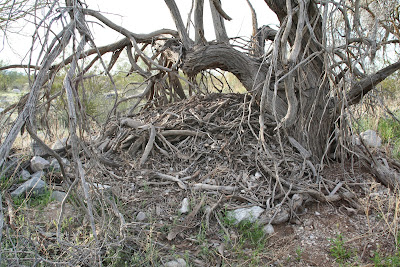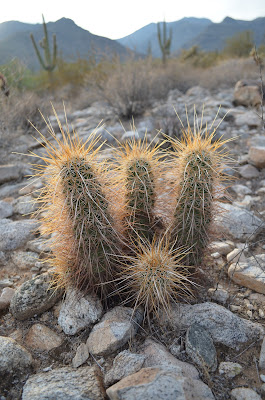 |
| Oak woodland where management practices similar to what is discussed in the book "Miracle Under the Oaks" have been implemented. |
Recently, I read William Stevens’ book “Miracle Under the Oaks.” This is an absolutely fantastic book of the scientific drama a group of non-scientists experienced as they learn how to, and restore prairies and oak savannas along the Chicago river. Beginning in the late 70’s, Steve Packard lead a group of volunteers to restore the tallgrass prairies in north east Illinois. These volunteers were composed of ordinary citizens who really had no idea how to restore a prairie. Carpenters, doctors, pharmacists, people from all walks of life with no formal scientific background, self educated themselves and learned through trial and error how to restore the prairie. As things began to pickup with the restoration projects, the general public and scientists began to take notice, becoming increasingly involved. In the process of prairie restoration the volunteers rediscovered and helped define the Midwestern oak savanna, an ecosystem that once encompassed 30 million acres during pre-settlement time but today only 0.02% remains. As a result, a movement has begun where thousands of acres of tallgrass prairie oak savannas are being researched and restored throughout the Midwest today. This ecological restoration movement has not been isolated to oak savannas however, many other similar movements are taking place throughout the world in many different ecosystems as diverse as deserts to grasslands to forests. Similar to the story in this book, these restorations are largely spearheaded by ordinary people without scientific backgrounds. These ordinary people work together with the scientific community and often become experts in some portion of these projects. Here is a great quote from the book showing how ordinary people can become valuable experts in a scientific subject through experience and self education:
“...I think there’s a lot of knowledge out there we haven’t taken advantage of. One of the things that bothers me is the degree of arrogance you see among the so-called scholars and researchers who have gotten the notion that they have all the answers and who often look down with disdain at people who are just walking encyclopedias of bits of knowledge.” Allen Harvey in Miracle Under the Oak
So the average non-scientist can become through self education and experience a sort of lay-scientist. Where these types of people work together with the scientific community huge strides can be made in restoration of damaged ecosystems and habitats. I truly believe common people can become experts on a subject if they have the desire to. Formal education does not need to limit this, though it can help. Formally educated scientists will always play a major role in science but the informal, lay-scientist expert can and should be playing a much larger role in science. Yes, the application of lay-scientists will be different but their overall roll can and should be an important one in many areas of science. The lay-scientist often has better access to land for ecological work and is not limited by availability of grant money. They do it because they love it. I love to encourage people to pursue things they love through self or formal education and become an expert of some type, the results are often amazing.
Here is a link to one of the preserves Steve Packard’s group worked on:
So the average non-scientist can become through self education and experience a sort of lay-scientist. Where these types of people work together with the scientific community huge strides can be made in restoration of damaged ecosystems and habitats. I truly believe common people can become experts on a subject if they have the desire to. Formal education does not need to limit this, though it can help. Formally educated scientists will always play a major role in science but the informal, lay-scientist expert can and should be playing a much larger role in science. Yes, the application of lay-scientists will be different but their overall roll can and should be an important one in many areas of science. The lay-scientist often has better access to land for ecological work and is not limited by availability of grant money. They do it because they love it. I love to encourage people to pursue things they love through self or formal education and become an expert of some type, the results are often amazing.
Here is a link to one of the preserves Steve Packard’s group worked on:
 |
| Red oak leaves and acorn. |






















